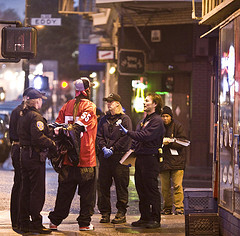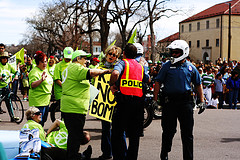 Newswise, a press release service, brought to my attention interesting new research out of Vanderbilt University by Sandra Barnes suggesting that, “churches with predominantly black congregations are thriving in urban and suburban areas, and the most successful churches employ a variety of sophisticated marketing and programming strategies to draw members.”
Newswise, a press release service, brought to my attention interesting new research out of Vanderbilt University by Sandra Barnes suggesting that, “churches with predominantly black congregations are thriving in urban and suburban areas, and the most successful churches employ a variety of sophisticated marketing and programming strategies to draw members.”
The research offers insights into what successful black churches have in common today, when parishioners have more choices and expect more from their churches than they have in the past.
“Contrary to expectations, I found that the black church is still a very important part of the lives of many African Americans,” Barnes said. “Those churches that market themselves, make sophisticated use of technology, offer practical sermons and programs for families and children over and above typical Bible studies are most likely to draw and keep new parishioners.”
People are expecting more from their churches…
Barnes found that today’s parishioners are “religiously savvy” and expect more from their church service, such as sermons and Bible studies relevant to everyday life, activities for individuals and families, and innovative worship services that incorporate dance and music.
“The broader societal change we have seen in consumerism is also manifesting in the religious arena. We expect more, bigger and better,” Barnes said. “As in the retail environment, today’s church goers are savvy shoppers. They are looking for a worship experience that meets their needs and programs that meet their needs and they’re willing to shop around to find it.”
This consumerism has led churches to use sophisticated marketing tools, specifically the Internet.
“Successful churches are very savvy when it comes to marketing. Word of mouth continues to be an important tool, but it is no longer the primary mechanism,” Barnes said. “Web sites, television ads and prime time exposure all play a role. Churches are using very intentional marketing strategies and much of it relies on technology.”




 The New York Sun
The New York Sun Follow
Follow